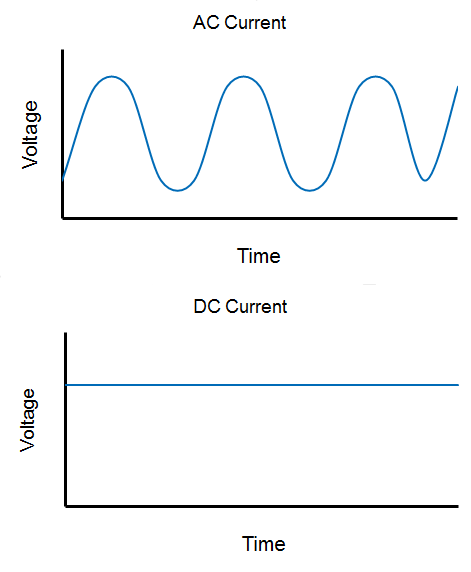What is DC?
Direct current (DC) is an electrical current where the charge is always in the same direction, in comparison to alternating current (AC) which means the flow of electricity can change.

The diagrams show the difference between the two currents, DC remains steady while AC changes direction in a back-and-forth motion. AC is what is supplied to sockets in homes and powers the majority of appliances as it has the advantage of being able to be transformed to higher or lower voltages - high voltages are more efficient to move electricity over distance.
War of the Currents
In the late 19th century, when Thomas Edison invented the first commercial light bulb, his solution was to use DC power to light them. However, the DC generators were unreliable and Edison passed the problem to one of his scientists - Nikola Tesla.
Tesla with the support of George Westinghouse created an AC powered electrical grid able to deliver supply over great distances, which became the basis of the modern electrical system.
DC in the Modern Network
Although Thomas Edison may have lost the war of the currents - DC power is becoming more applicable within the modern energy system - particularly with the increased need for battery charging in electric vehicles. As DC current can utilise higher voltage resulting in lower electrical losses and more efficient use of the electrical network.
DC is also becoming increasingly popular when transferring electricity over long distances as higher efficiencies and lower electrical losses are achieved. Examples of this associated with the UK include the Western, North Sea and AQUIND HVDC links. DC is also used to interconnect separate power systems, where traditional AC connections cannot be used.
